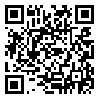Volume 28, Issue 3 (2021)
EIJH 2021, 28(3): 1-23 |
Back to browse issues page
Download citation:
BibTeX | RIS | EndNote | Medlars | ProCite | Reference Manager | RefWorks
Send citation to:



BibTeX | RIS | EndNote | Medlars | ProCite | Reference Manager | RefWorks
Send citation to:
Abdolkarimi S, Estaji M. A Semantic Analysis of War Literature Based on Psychoanalytic Literary Criticism and Conceptual Metaphor Theory. EIJH 2021; 28 (3) :1-23
URL: http://eijh.modares.ac.ir/article-27-47264-en.html
URL: http://eijh.modares.ac.ir/article-27-47264-en.html
1- Assistant Professor of Linguistics Department of Shahid Beheshti University, Tehran, Iran , s_abdolkarimi@sbu.ac.ir
2- Linguistics Department, Shahid Beheshti University
2- Linguistics Department, Shahid Beheshti University
Abstract: (1055 Views)
This study, is a semantic attempt to find out if there is a significant difference in the linguistic representation of Iranian and British war literature in the Iran-Iraq war (known as The Imposed War (of Iraq against Iran)) and World War II. Authors chose these two wars for two reasons: 1. In both cases, the war was defensive for both countries, and 2. both wars lasted for almost the same period: The Imposed War lasted for 8 years, and World War II lasted for 6 years. Given the aforementioned similarities, we seek to compare the linguistic representation of ideologies that had governed in Iranian and English societies (i.e. Islamic ideology vs. liberal democracy and the monarchy). In this study, we ask if there is a significant difference in the linguistic representation of these two wars. We seek to 1. Describe the linguistic iconization of war based on the source domains of metaphors, and 2. Describe the ideological similarities and differences of war using linguistic representations. The views of Sigmund Freud, Alfred Adler, and Carl Gustav Jung have been used in the psychoanalytic analysis of these novels.
Article Type: Original Research |
Subject:
Arts and Humanities (General)
Received: 2020/10/31 | Accepted: 2021/01/2 | Published: 2021/07/19
Received: 2020/10/31 | Accepted: 2021/01/2 | Published: 2021/07/19
Send email to the article author
| Rights and permissions | |
 |
This work is licensed under a Creative Commons Attribution-NonCommercial 4.0 International License. |








